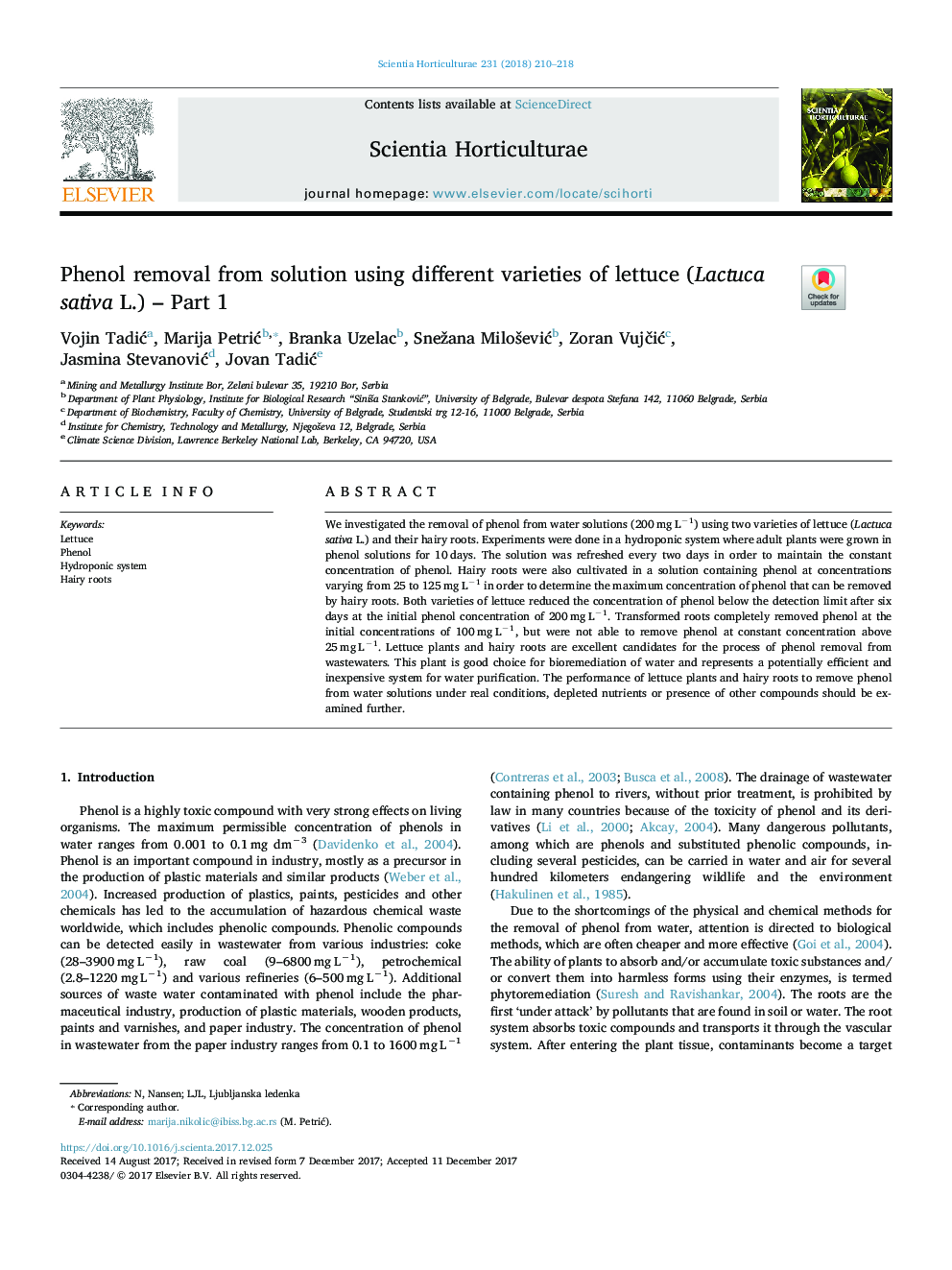| Article ID | Journal | Published Year | Pages | File Type |
|---|---|---|---|---|
| 8892996 | Scientia Horticulturae | 2018 | 9 Pages |
Abstract
We investigated the removal of phenol from water solutions (200â¯mgâ¯Lâ1) using two varieties of lettuce (Lactuca sativa L.) and their hairy roots. Experiments were done in a hydroponic system where adult plants were grown in phenol solutions for 10â¯days. The solution was refreshed every two days in order to maintain the constant concentration of phenol. Hairy roots were also cultivated in a solution containing phenol at concentrations varying from 25 to 125â¯mgâ¯Lâ1 in order to determine the maximum concentration of phenol that can be removed by hairy roots. Both varieties of lettuce reduced the concentration of phenol below the detection limit after six days at the initial phenol concentration of 200â¯mgâ¯Lâ1. Transformed roots completely removed phenol at the initial concentrations of 100â¯mgâ¯Lâ1, but were not able to remove phenol at constant concentration above 25â¯mgâ¯Lâ1. Lettuce plants and hairy roots are excellent candidates for the process of phenol removal from wastewaters. This plant is good choice for bioremediation of water and represents a potentially efficient and inexpensive system for water purification. The performance of lettuce plants and hairy roots to remove phenol from water solutions under real conditions, depleted nutrients or presence of other compounds should be examined further.
Related Topics
Life Sciences
Agricultural and Biological Sciences
Horticulture
Authors
Vojin TadiÄ, Marija PetriÄ, Branka Uzelac, Snežana MiloÅ¡eviÄ, Zoran VujÄiÄ, Jasmina StevanoviÄ, Jovan TadiÄ,
